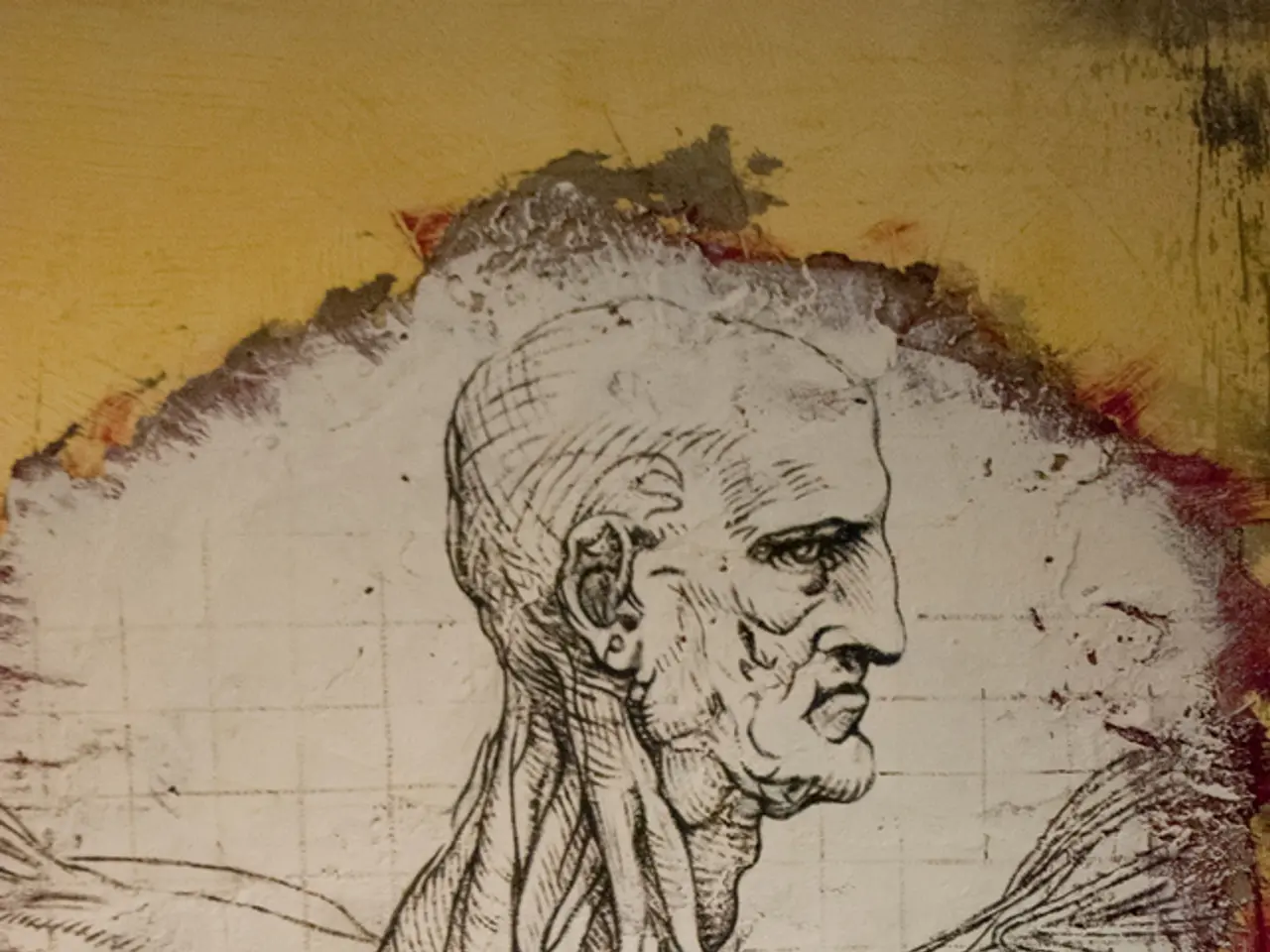Investigating Emotional Depth: Delving into Gustave Courbet's The Despairing Man
Gustave Courbet's painting, "The Desperate Man" (circa 1843–1845), is a powerful self-portrait that captures the artist's emotional intensity during his early career. Painted in the heart of the 19th century, this work is renowned for its raw portrayal of human anxiety and inner turmoil, offering a glimpse into Courbet's psychological state as he was developing his revolutionary realist style.
Born in 1819 in Ornans, France, Courbet came from a wealthy family and had access to education and art. He began his career in Paris, where he faced challenges in the art world but remained steadfast in his commitment to portraying ordinary life and raw human experience, often challenging Romantic conventions.
"The Desperate Man" reflects not only a deeply personal emotional upheaval but also the broader spirit of Realism that would define his work. The central positioning of the figure draws the viewer's eye to the figure's face, which is marked by wide, alarmed eyes and a gesture of clutching his thick hair in apparent desperation. The painting's symbolism and meaning help us appreciate its emotional depth and historical context.
The colors in "The Desperate Man" emphasize sadness with deep tones, while the use of space enhances the emotional impact. The figure is isolated, focusing solely on the man and his plight, with diagonal lines suggesting movement and tension. The facial expression and body language communicate deep emotions without words, inviting viewers to reflect on their feelings and possibly relate to the feelings of desperation portrayed.
Courbet's influence reached far beyond his lifetime, inspiring the Impressionists and later artists. Despite criticism for his style and challenging traditional art views, Courbet gained respect and exhibited his works in major salons. His works, such as "The Desperate Man," encourage empathy through their connection with human emotions, showing that art is not just about beauty but also conveying feelings.
In summary, "The Desperate Man" is both a psychological self-portrait of youthful anguish and a symbol of Courbet's emerging Realist philosophy. It captures an artist wrestling with internal and external conflicts at a pivotal moment in his life and artistic journey, showcasing raw human experience with expressive face, bold brushwork, contrast of light and shadow, dark color palette, composition focusing solely on the man, and isolation enhancing his desperate state.
In modern discussions of literature, entertainment, and lifestyle, "The Desperate Man" by Gustave Courbet serves as an intriguing case study for its exploration of raw human emotions, challenging traditional art norms in much the same way science and technology challenge conventional thinking. Additionally, Courbet's oeuvre, including "The Desperate Man," transcends time, inspiring contemporary books and art that delve into pervasive human experiences, reflecting a continuous desire for realist narratives and emotions in our rapidly evolving world.




